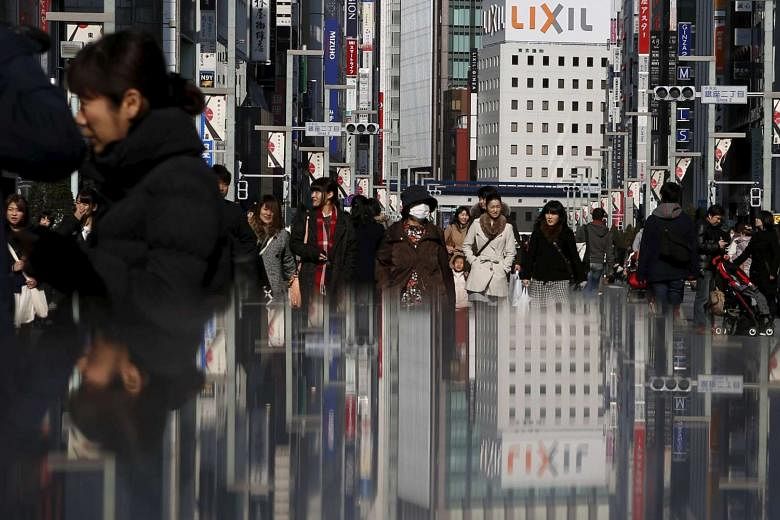TOKYO (BLOOMBERG, AFP) - The Bank of Japan kept monetary policy steady on Friday (Oct 30) as Governor Haruhiko Kuroda bets that the current level of stimulus is still sufficient to drive prices to his 2 per cent inflation target.
Mr Kuroda has maintained the view in recent months that a strong economic cycle is intact, with high corporate profits and a tight labor market bringing price gains, once the effect of low energy costs is discounted. The BOJ released a brief statement after its meeting on Friday showing that the board voted 8-1 to continue expanding the monetary base at an annual pace of 80 trillion yen (S$930 billion).
Economists were split on the likelihood of an increase in the BOJ's already record asset purchases, while government officials and the finance minister had talked down the need for more stimulus. The BOJ will deliver a more detailed outlook for economic growth and inflation at 3 pm in Tokyo, followed by a briefing by Mr Kuroda.
Data earlier on Friday showed the BOJ's key price gauge, which strips out food costs, dropped for a second straight month. After removing both food and energy, prices climbed 0.9 per cent in September.
"It's wrong to think pressure is off from the BOJ," Kazuhiko Ogata, an economist at Credit Agricole SA, said before the decision. "The economy isn't strong and 2 per cent inflation is far, far away. The BOJ will keep examining whether it should ease more."
The yen strengthened 0.6 per cent to 120.45 per US dollar at 12:23 pm in Tokyo.
JPMorgan Chase & Co. and Mitsubishi UFJ Morgan Stanley Securities Co. are among those expecting the BOJ to cut its inflation forecasts when it releases its outlook report at 3 pm in Tokyo. Economists also have speculated that the central bank may need to push back its date for reaching 2 per cent inflation, which currently runs through September 2016.
Hideo Hayakawa, a former chief economist for the central bank, projected that the BOJ will cut its price-gain forecasts to as low as 0.3 per cent for this fiscal year and to as low as 1.6 per cent for the following 12 months, with oil prices remaining low.
Recent economic data were mixed. Retail sales unexpectedly dropped in September, exports rose and a report on Thursday showed industrial production increased 1 percent, more than economists projected.
The BOJ's decision comes after the US Federal Reserve indicated Thursday that December is still a possibility for its first rate increase since 2006 as it softened its language on global economic risks.
It wouldn't be the first time for the BOJ to leave policy unchanged while trimming its price forecasts and pushing out the timing of reaching the 2 per cent goal, should the outlook report confirm such changes later on Friday. It did much the same thing in April, when Mr Kuroda mainly attributed the delay to lower oil prices.
He has said the BOJ doesn't need to act if oil is simply causing lower price forecasts.
Sixteen of 36 analysts surveyed by Bloomberg said they expected the BOJ to expand stimulus on Friday, eight forecast further easing at a later date and 12 saw no prospect of any change in the foreseeable future.
In the most recent projection in July, the BOJ assumed Dubai crude oil prices would rise from US$60 to US$70 per barrel toward its projection period ending in March 2018. It hasn't traded above US$60 since then.
"Pressure will only mount for more easing," Masamichi Adachi, an economist at JPMorgan Chase & Co. and a former BOJ official, said before Friday's decision. "The economy is clearly not strong enough to suggest 2 percent inflation is under way."
The BOJ board next meets Nov. 18 and 19.

